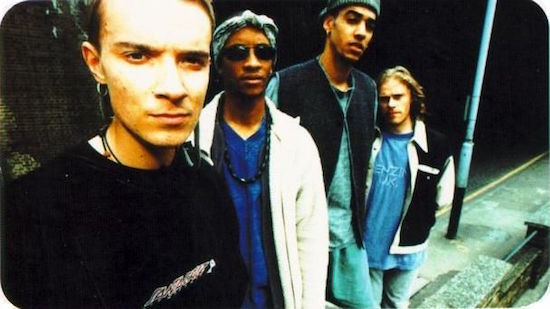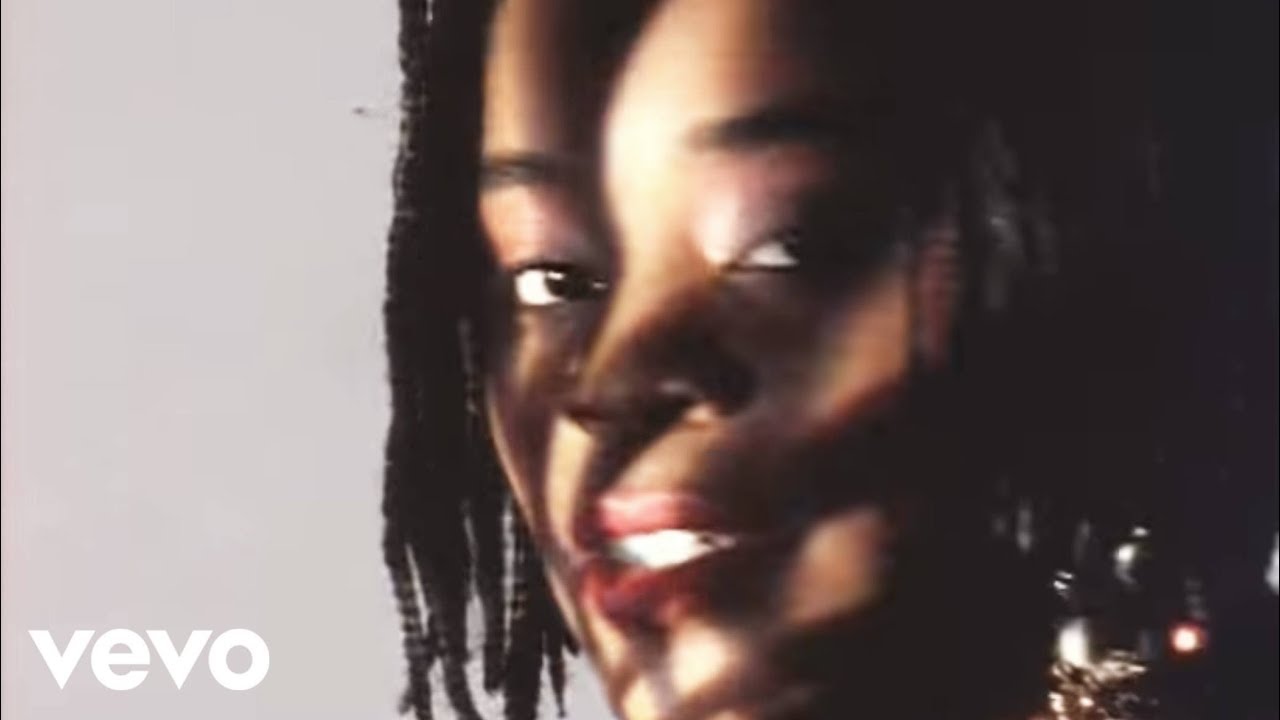The accusation was first made by the Boy’s Own fanzine and other rave-era tastemakers, but was most pertly set out in the August 1992 issue of Mixmag. Flanked on either side by fellow members of his group the Prodigy, a sneering Liam Howlett is pictured posing on the magazine’s cover with a gun firmly pressed against his temple. The banner headline running below him asks: “Did Charly Kill Rave?” The provisional answer: it’s complicated.
The accused is the Prodigy’s second ever single and their first Top 10 hit. Released in late 1991, ‘Charly’’s popularity was unexpected, to say the least. Up to that point the Essex group, consisting of Howlett, two dancers and an MC, had built some local notoriety playing a live PA set to London clubs and parties. Their first EP, Where Evil Lurks, had sold a solid 7,000 copies and put the group on the dance charts, but it gave no premonition of the enormity of ‘Charly’. Mainly on the basis of the group adding the song to their live show, the single sold out on pre-orders alone. Things went quickly from there. The record label ran a series of further pressings of the vinyl. The track’s success led to the video featuring on Top of the Pops, massive live show audiences, and an eventual Number 3 pop chart ranking.
The commercial success of ‘Charly’ is curious. The track is mostly typical of ‘hardcore’, the native sub-genre of dance music that governed the UK rave scene’s tentative steps into the realm of the popular in the early 1990s. As it spread beyond London – producing in the process a string of top 40 hits in 1991 – hardcore was mostly ignored if not simply derided by the UK music press. A “barbarian horde waiting to overrun the pop citadel” was, by Simon Reynolds’ estimation, the music press’ view of hardcore. Nothing more than the province of boorish “acid teds”.
Eschewing the rhythmic finesse of Chicago house and Detroit techno, British producers supplemented steady 4/4 beats with breakbeats, rumbling sub-bass, siren-like keyboards and stadium-ready piano riffs – as much the tropes of hard rock as those of the post-disco landscape from which rave emerged.
On ‘Charly’, The Prodigy mostly follow that formula. The track has a massive bassline, stabbing keyboards and a hoover sound, along with a pounding 4/4 bass drum occasionally supplemented with a breakbeat.
But we know rules require exceptions. In this case peculiarity comes in the form of the song’s periodic interruptions by a sample–sourced from a 1970s ITV public service announcement, of a shrill howling cat followed by a young boy repeatedly imploring The Prodigy’s audience: “Charly says: always tell your mummy before you go off somewhere.” The aura is of a cartoon villain’s snicker. It’s a fairly sardonic invocation of the child’s exposed vulnerability to, one presumes, a rave culture that was at that time the object of tabloid fear-mongering. That said, ‘Charly’’s abandonment of musical and metaphorical subtlety makes him an unlikely, or at least rather second-rate killer. Sometimes though, the logics of pop work a lot like the rules of an Agatha Christie novel: suspect those arousing least suspicion.
Several months after ‘Charly’ was released, the then-unknown group Smart E put out the single ‘Sesame’s Treat’. It not only charted one spot higher, hitting number 2 on the UK singles chart, it amped up the schmaltz factor too. It’s sparse as far as songs go, amounting mostly to an uptempo breakbeat and the jaunty calypso theme to the children’s TV programme from which the song draws its name, albeit repurposed as an oafish reference to ecstasy.
The joke falls flat but the song’s appeal, derived mainly from the barely altered Sesame Street melody and the chorus of children who accompany it, is undeniable. The impulse is equal to that of ‘Charly’: the pastoral spaces of childhood encroached upon by the inebriate and the vulgar. It didn’t stop there either.
As its long history of bypassed masterworks attests, pop does not always know a good thing when it sees it. But when pop does know it has that thing, it bleeds it dry. In this regard ‘Charly’ and ‘Sesame’s Treat’ set the stage for a series of crossover hits engaged in a rearguard attack upon the 1970s childhoods of early ravers. If not always grounded in children’s voices, songs, or sampled cartoons, then double-time helium vocal samples ushered the child centre-stage in UK dance music in 1991 and 1992 in what became known, in an echo of the late 1960s, as “toytown techno”.
Urban Hype’s ‘A Trip to Trumpton’ moored the gentle plucking acoustic guitar and occasional narration from the 1970s children’s stop-motion animated programme Trumpton to a fast and hard breakbeat and stabbing keyboards. On ‘Roobarb and Custard’ the group Shaft sampled the theme to the titular 1970s British cartoon dog and cat, themselves named after a favourite school pudding. The group Horsepower filched from the same decade when they used the rising horn slurs and pounding timpani of the theme music to the TV production of Black Beauty as the basis for their single “Bolt”. Altern-8’s single ‘Activ-8’ has a recurring sample of a small child imitating the voice of what sounds like a doped-up speed dealer: “top one, nice one, get sorted!”
The sophomoric mood was worn as much as it was sung. Babies’ dummies were a commonplace accessory, used to relieve the jaws of gurning dancers, while glo-sticks amplified the visual effects induced by ecstasy. Es were (and continue to be) often named after candy brands, lollipops were widely consumed, bright coloured clothing was common. A drug-induced playfulness, along with the sorts of accessories one might expect to find at a three year old’s birthday party, pervaded.
The question of whether toytown techno really did ‘kill rave’ as a subculture or merely accompanied the demise that often follows pop success is of lesser relevance here. In fact, Mixmag publicly apologised to the Prodigy a decade later for its hasty and churlish verdict. And ‘Charly’ and ‘Trumpton’ were among the last major hits from the British interpretation of late-80s Chicago house and Detroit techno. Not long after, the music began to split into so many tributaries of sub- and micro-genres.
Whatever the extent of toytown techno’s culpability in the waning energy of rave, it’s compelling to ask why the child might have embodied that moment’s inevitable exhaustion. Infantilism might be an irreducible element of pop music, but still it seems prescient to ask why, in its second iteration, the summer of love only called upon the child at its dusk and not its dawn – as if the very meaning of childbirth wanted to be reversed.
The story of that dawn is frequently trod ground. In 1987 a small group of DJs and promoters returned from their Ibiza holidays with the souvenirs of newly discovered pleasures of ecstasy along with an expansive musical repertoire adopted from local DJ Alfredo Fiorillo. Theirs was the particular recipe that gave rave culture its identity: dance music drawn from de-industrialising US cities (Detroit and Chicago especially) along with rituals adopted from high society nightclubs produced a peculiar Balearic ideology. This was, in Joshua Clover’s astute observation, a tribalist utopia co-mingled with the hedonism of the holiday.
As rave spread, first from Ibiza to a couple of London nightclubs, then to warehouses and fields orbiting London and ever further afield, gathering continually larger crowds as it went, ecstasy came more and more to displace alcohol in British nightlife. Not unrelated, the sensuality of dance replaced the hetero theatre of pubs and nightclubs. Focused more on collective physical abandon than on sexual gratification, a romantic narrative was to be found at raves that was closer to the fleeting encounter of the gay disco than to tawdry drunken come-ons.
Late 1980s acid house and early 1990s hardcore shunned rock’s claims to individualised authenticity.
Not only were DJs conduits for the party rather than its stars, but the rejection of rock individualism was inherent to dance music’s form. The anonymous time of repeating rhythm, absent the heroic figure of the singer, incarnated rave’s collective pleasure. And this is the vantage point from which we can begin to grasp its political and aesthetic horizons.
There’s an argument to be made here that late 1980s dance culture heralded a utopian sensibility. This requires us to view rave’s rejection of bourgeois social mores as inherently revolutionary. On this view, rave doesn’t only reject hetero courtship rituals, it implies a new orientation to sensuality and pleasure, mainly absent from mainstream popular culture since the 1960s.
The diffuse sense of optimism which would underlie such a claim was nowhere more evident than on that barometer of popular sentiment known as the singles chart. One can trot out as evidence the bouncy, up-tempo house hits that dominated the charts in 1988. S’Express’ ‘Theme from S’Express’, bubbling with brazen self-assurance, reached Number 1 that April. Black Box’s ‘Ride on Time’, the biggest hit of 1989, repurposed a Loleatta Holloway disco song by supplementing it with a bounding bass that gave the piano and vocal a new power.
But it’s A Guy Called Gerald’s ‘Voodoo Ray’, the bestselling independent single of 1988, that stands as an anthem for the epoch. “I wanted to create something really tribal”, Gerald has said of the track. And surely, its exquisitely dizzying convergence of kicks and thumps and beguiling chant of a vocal best reflect the Peace-Love-Unity-Respect positivity of the period.
The mood extended beyond the confines of house music. In the summer of 1989, Soul II Soul displaced teen crooner and major label commodity Jason Donovan from the top of the pop charts with the shuffling hip-hop beats and Philly soul strings of the upbeat ‘Back to Life’. Like Gerald, Soul II Soul were upfront about their own tribal pretensions, but the mood infected rock too, especially in the form of the sprawling breakbeat-driven, chaotic psychedelia of The Stone Roses and Happy Mondays.
Not unlike the psych-rock revolution, the second summer of love’s espousal of a romantic desire for pleasure might be read as a political demand in itself. Party for the right to party, one might say.
This is an edited extract from Paul Rekret’s new book, Down With Childhood, out now on Repeater Books. Cafe Oto in Hackney are hosting a launch party for the book next Saturday, 7 October, with Patchfinder, Jacob Williams, Paul Rekret and Ash Sarkar.




